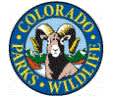Colorado’s Wildlife is Better Left Alone
OutdoorHub 06.21.12

As the weather warms and people’s outdoor activities increase, so does the chance of encountering baby animals and their parents. Colorado Parks and Wildlife officials remind the public that to give wildlife the best chance of survival, people should leave animals alone. Often times, well-meaning people try to provide assistance where, in most cases, none is needed.
Likely learned by watching and reading popular children’s books and movies, some people attribute human qualities to animals – a concept known as anthropomorphism – and often try “helping” young animals that appear to be abandoned. However, calves and fawns, young raccoons, rabbits and many other species are often deliberately left alone by their mothers to give them the best chance of survival. They are not as delicate and vulnerable as a human baby is and human intervention often affects their chances of long-term survival.
“We know most people mean well,” said Erin Serfoss, Colorado Parks and Wildlife Customer Service Representative in Grand Junction. “But picking up a healthy, young animal and bringing it to us or a vet for help is often the worst thing they can do. In the majority of cases, the young animal is much better off left alone.”
Wild animals have developed survival instincts that make human intervention unnecessary. For example, young deer and elk stumbling about weakly while learning to walk can attract predators, so nature has provide simple but effective survival tactics – the ability to lie still for hours, little to no scent and natural camouflage. Despite initial appearances, the young animal is much safer left alone while its mother forages for food.
Handling most wildlife is also illegal. People attempting to rehabilitate animals without authorization from Colorado Parks and Wildlife face stiff fines. Additionally, wildlife can carry diseases, and handling it can lead to human illness or serious injuries from scratches and bites from sharp teeth and claws.
“For their own safety, as well as the safety of the animal, people should not handle wildlife,” reminds Trina Romero, Watchable Wildlife Coordinator for Colorado Parks and Wildlife. “If after careful observation, it appears that an animal does need human intervention, the best course of action is calling a wildlife officer.”
Romero says that a young animal that appears healthy and active is likely either still receiving food from its mother, or is capable of surviving on its own and does not need human help. However, if a young animal has been left alone for 12 hours or more, appears emaciated and weak, or it is obvious that the animal’s mother has been killed or severely injured, it may be time to call in an expert.
“If it is truly abandoned or needs help, a wildlife officer will determine what should happen to the young animal and may choose to take it to a vet or a licensed rehabilitation center where the goal is to eventually release it back into its natural habitat,” said Romero.
However, rare cases exist where an animal can benefit from human intervention and an officer may not be needed.
Despite the myth that a mother bird will abandon its young chick if it is touched by a human, wildlife officials do recommend making an effort to return a baby bird that has fallen from its nest. Even if a person can only place the fallen chick near its nest, the mother will hear its cries and continue to feed it. Place the young bird in a box lined with paper towels or dryer lint, but do not use grass. The moisture content in grass will lower the bird’s body temperature.
People should also avoid feeding wildlife. It is illegal, irresponsible and can carry hefty fines. A wild animal’s natural diet is difficult to duplicate and an attempt to feed it or give it water can cause illness or disease. It can also condition wild animals to see humans as a source of food.
Everyone should remember that nature has provided effective, natural survival methods for wildlife. Although many people have a strong instinct to help what appears to be an animal in need, wildlife is very capable of taking care of itself. In most cases, the best way to care for our wildlife is to watch it from a distance, enjoy the view and let nature take its course.
For more information, please go to: http://wildlife.state.co.us/Education/TeacherResources/ColoradoWildlifeCompany/Pages/WatchingYoungCWCSpr2000.aspx

